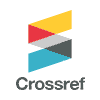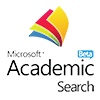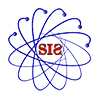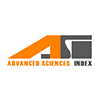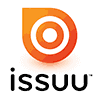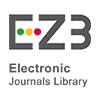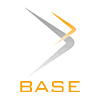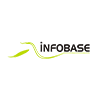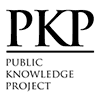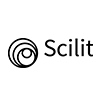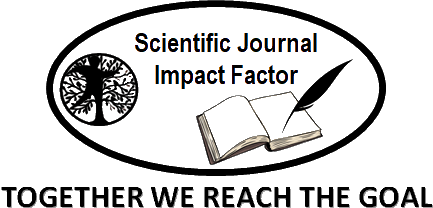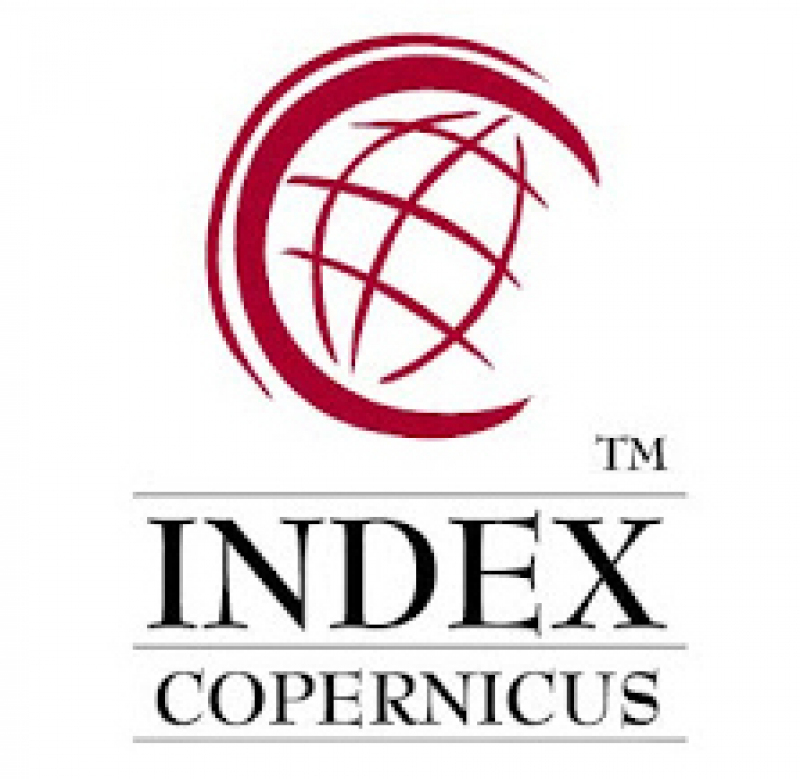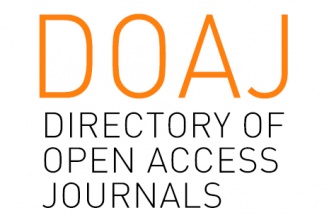The Effectiveness of Differentiated Instruction with a Realistic Mathematics Education (RME) Approach in Terms of Mathematical Literacy and Self-efficacy of Junior High School Students on the Topic of Systems of Linear Equations in Two Variables
Abstract
The purpose of this study is to describe the effectiveness of differentiated instruction using the Realistic Mathematics Education (RME) approach in terms of students’ mathematical literacy and self-efficacy in two experimental classes: experimental class 1 (slow learners) and experimental class 2 (fast learners). Additionally, this study aims to identify which class demonstrates greater effectiveness in implementing differentiated instruction with the RME approach. In this study, differentiated instruction was applied by grouping students based on their interests, while the RME approach was used to design the mathematics learning activities in class. This study employed a quasi-experimental method with a non-equivalent pretest-posttest group design. The research was conducted at private junior high school in Sleman between January and February 2025. The population consisted of all eighth-grade students at the school during the second semester of the 2024/2025 academic year. The classes were selected based on the research objective—to compare slow learners and fast learners—as well as recommendations from the school's mathematics teacher. The selected sample consisted of class VIII A (slow learners) as experimental class 1 and class VIII C (fast learners) as experimental class 2. Data collection instruments included lesson implementation observation sheets, pretests and posttests for mathematical literacy, and a student self-efficacy questionnaire. Prior to implementation, all instruments were tested in a class not included in the main study. The results indicated that all instruments were valid and reliable, meaning they were suitable for use in this research. The statistical analyses used included Pillai’s Trace test to determine differences in the mean vectors between two independent samples, followed by an independent samples t-test. The results of the study showed that the implementation of differentiated instruction with the RME approach in experimental class 1 was not effective in terms of students’ mathematical literacy, but it was effective in terms of self-efficacy. In contrast, in experimental class 2, the implementation was effective in terms of both mathematical literacy and self-efficacy. Furthermore, the study indicated that differentiated instruction with the RME approach was more effective when implemented in the fast learner class (experimental class 2) compared to the slow learner class (experimental class 1), in terms of both mathematical literacy and self-efficacy. Future research is recommended to explore other types of differentiation and different student characteristics to broaden the scope of differentiated instruction implementation.
Keywords
Full Text:
PDFReferences
Ernawati, & Muzaini, M. (2020). The Analysis of Students’ Difficulties in Solving Systems of Linear Equation Problems in Two Variables. Jurnal Studi Guru Dan Pembelajaran, 3(3), 391–398. https://e-journal.my.id/jsgp/article/view/405
Freudenthal, H. (1991). Revisiting Mathematics Education. Kluwer Academic Publishers.
Gravemeijer, K. P. E. (1994). Development Realistic Mathematics Education. CD Press.
Gulo, D. R. S., Mendrofa, N. K., Zega, Y., & Lase, S. (2024). Pengaruh Model Pembelajaran Realistic Mathematic Education (RME) terhadap Kemampuan Berpikir Kritis dan Self-Efficacy Siswa. Jurnal Riset HOTS Pendidikan Matematika, 4(3), 1378–1390. https://doi.org/https://doi.org/10.51574/kognitif.v4i3.2003
Haelermans, C. (2022). The Effects of Group differentiation by students’ learning strategies. Instructional Science, 50(2), 223–250. https://doi.org/10.1007/s11251-021-09575-0
Jati, T. A. S., Sapti, M., & Purwoko, R. Y. (2023). Penerapan Pembelajaran Berdiferensiasi Berbasis RME untuk Meningkatkan Kemampuan Numerasi Siswa. Pedagogy: Jurnal Ilmiah Ilmu Pendidikan, 8(2), 387–396.
Kholid, M. N., Rofi’ah, F., Ishartono, N., Waluyo, M., Maharani, S., Swastika, A., Faiziyah, N., & Sari, C. K. (2022). What Are Students’ Difficulties in Implementing Mathematical Literacy Skills for Solving PISA-Like Problem? Journal of Higher Education Theory and Practice, 22(2), 181–200. https://doi.org/10.33423/jhetp.v22i2.5057
Kusmaryono, I., & Kusumaningsih, W. (2023). Evaluating the Results of PISA Assessment: Are There Gaps Between the Teaching of Mathematical Literacy at Schools and in PISA Assessment? European Journal of Educational Research, 12(3), 1479–1493.
Lai, C.-P., Zhang, W., & Chang, Y.-L. (2020). Differentiated instruction enhances sixth-grade students’ mathematics self-efficacy, learning motives, and problem-solving skills. Social Behavior and Personality, 48, 1–13. https://doi.org/10.2224/sbp.9094
Laia, F. (2024). Analisis Kesulitan Siswa Kelas VIII Dalam Menyelesaikan Soal Sistem Persamaan Linear Dua Variabel. Afore : Jurnal Pendidikan Matematika, 3(1), 127–139. https://doi.org/10.57094/afore.v3i1.1679
Laine, E., Veermans, M., Gegenfurtner, A., & Veermans, K. (2020). Individual Interest and Learning in Secondary School STEM Education. Frontline Learning Research, 8(2), 90–108. https://doi.org/10.14786/FLR.V8I2.461
Maulana, I. M. B. (2021). Pendekatan Matematika Realistik (Dalam Pembelajaran Matematika). Bintang Pustaka Madani.
Nugraha, H. (2023). Improvement of Mathematical Literacy with Differentiation Learning Model. Proceedings of the 7th International Symposium on Mathematics Education and Innovation (ISMEI 2022), 103–113. https://doi.org/10.2991/978-94-6463-220-0_12
OECD. (2022). PISA 2022 Mathematics Framework.
Pradini, W., & Winarsih, W. (2020). Analysis of Junior High School Students Difficulty in Solving Linear Equation in Two Variables Word Problem. AIP Conference Proceedings. https://doi.org/10.1063/5.0000550
Sulfayanti, N. (2023). Kajian Literatur: Faktor dan Solusi untuk Mengatasi Rendahnya Literasi Matematis Siswa. Jurnal Jendela Pendidikan, 3(04), 382–388. https://doi.org/10.57008/jjp.v3i04.590
Susilo, C. Y., & Prihatnani, E. (2022). Scaffolding for Slow Learner Children on Integer Operations. Kreano, Jurnal Matematika Kreatif-Inovatif, 13(1), 113–125. https://doi.org/10.15294/kreano.v13i1.34363
Szabo, Z. K., Körtesi, P., Guncaga, J., Szabo, D., & Neag, R. (2020). Examples of Problem-Solving Strategies in Mathematics Education Supporting the Sustainability of 21st-Century Skills. Sustainability (Switzerland), 12(23), 1–28. https://doi.org/10.3390/su122310113
Taqiya, F. A., & Juandi, D. (2023). Students’ Mathematical Literacy with Realistic Mathematics Education (RME) Approach: Systematic Literature Review. Mathematics Education Journal, 7(1), 60–72. https://doi.org/10.22219/mej.v7i1.24103
Tomlinson, C. A. (1999). The Differentiated Classroom Responding to the Needs of All Learners. Association for Supervision and Curriculum Development.
Tomlinson, C. A. (2001). How To Differentiate Instruction in Mixed-Ability Classrooms (2nd Editio). Association for Supervision and Curriculum Development.
Zainudin, N. F. B., Mohamad Ashari, Z. B., & Kosnin, A. B. (2019). A Concept Paper: the Effectiveness of Project Based Learning on Self-Efficacy’S Level Among Slow Learner Students in Malaysia. Education, Sustainability And Society, 2(3), 21–24. https://doi.org/10.26480/ess.03.2019.21.24.
DOI: http://dx.doi.org/10.18415/ijmmu.v12i10.7109
Refbacks
- There are currently no refbacks.
Copyright (c) 2025 International Journal of Multicultural and Multireligious Understanding

This work is licensed under a Creative Commons Attribution-NonCommercial-NoDerivatives 4.0 International License.
https://ijmmu.com
editor@ijmmu.com
facebook.com/ijmmu
Copyright © 2014-2018 IJMMU. All rights reserved.






